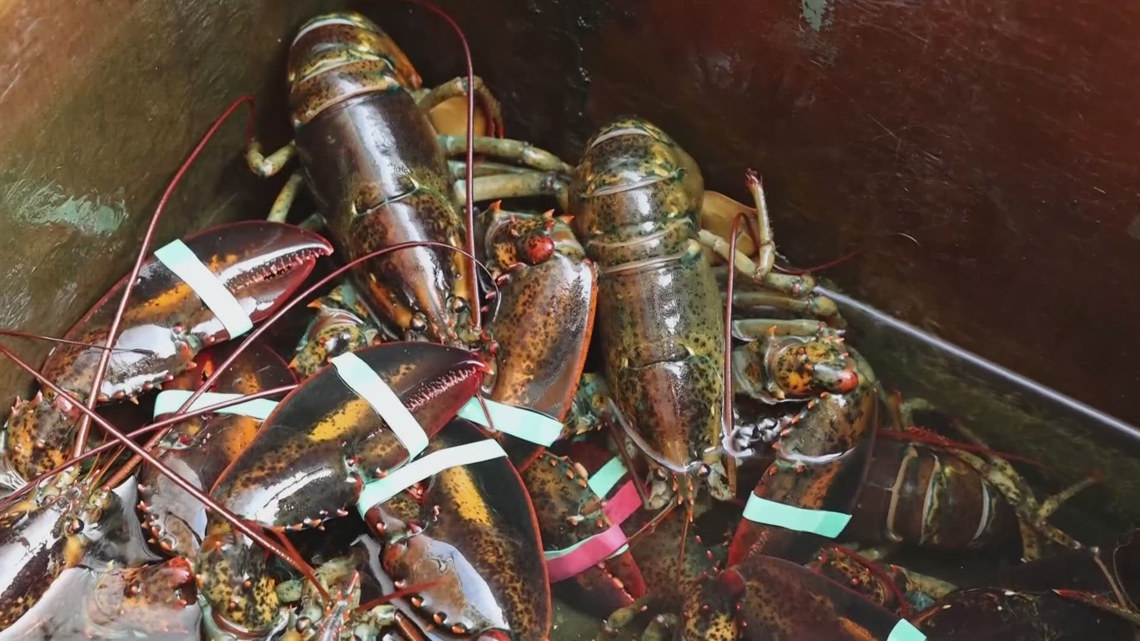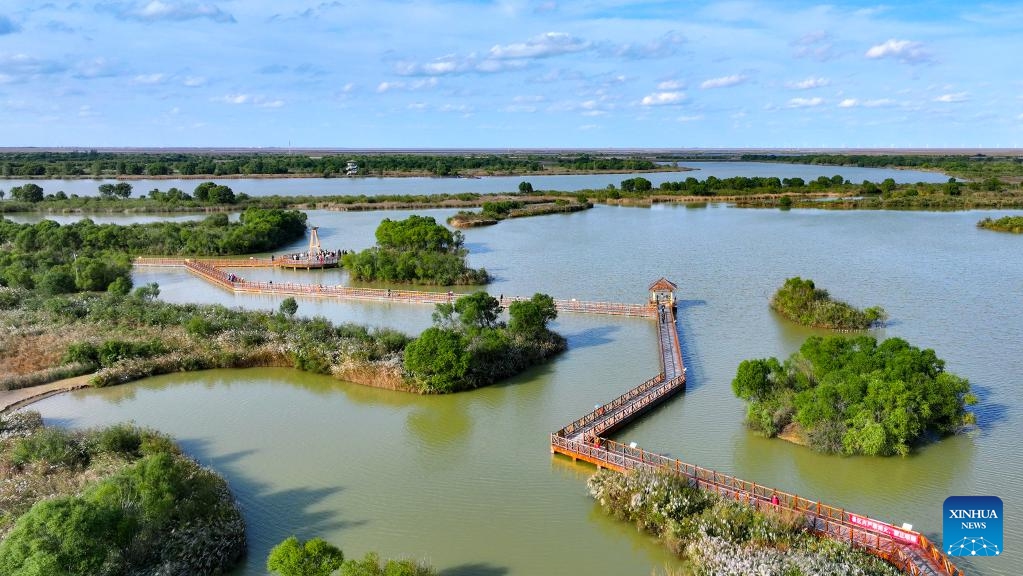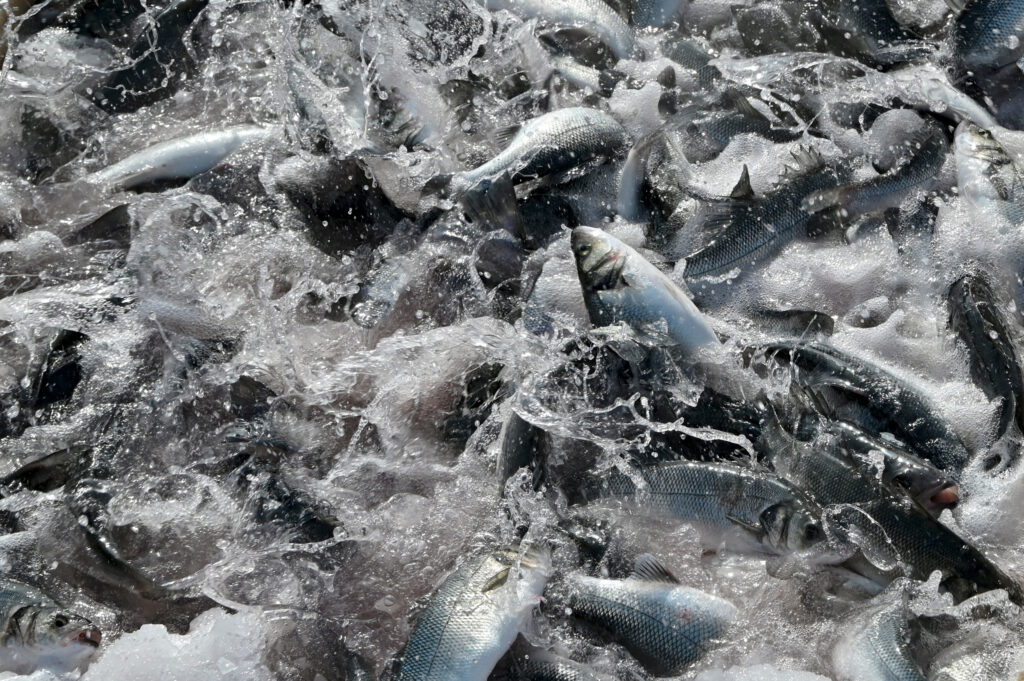New report finds minimal overfishing of lobster in Gulf of Maine – newscentermaine.com

Report on New England Lobster Population and Sustainable Development Goal Implications
Executive Summary
A recent benchmark stock assessment by the Atlantic States Marine Fisheries Commission (ASMFC) reveals a significant decline in the New England lobster population, raising concerns related to the United Nations Sustainable Development Goals (SDGs). The report indicates that while the stock is not yet depleted, it is experiencing overfishing. This situation presents a critical challenge to balancing marine conservation under SDG 14 (Life Below Water) with the economic stability of coastal communities, a key component of SDG 8 (Decent Work and Economic Growth). The findings necessitate a careful review of current management practices to ensure the long-term sustainability of both the ecosystem and the industry.
Key Findings of the ASMFC Assessment
- Population Decline: The lobster population off the coast of New England has decreased by 34 percent since 2018.
- Stock Status: In the Gulf of Maine and Georges Bank, the current population is estimated at 201 million lobsters. This figure is below the target of 229 million but remains above the depletion threshold of 143 million.
- Overfishing Determination: The assessment concludes that overfishing is occurring, though marginally, at a rate approximately 0.00066 percent above the defined threshold. This finding directly impacts the objectives of SDG 14.4, which aims to end overfishing and restore fish stocks.
Implications for Sustainable Development Goals
The report’s findings have direct relevance to several SDGs, highlighting the interconnectedness of environmental health and economic prosperity.
- SDG 14: Life Below Water
The primary goal impacted is the conservation and sustainable use of marine resources. The determination of “overfishing” is a direct challenge to Target 14.4. While the stock is not depleted, the trend indicates a need for proactive management to prevent further decline and ensure the fishery’s sustainability for future generations. - SDG 8: Decent Work and Economic Growth
The lobster industry is a cornerstone of Maine’s coastal economy. Any potential management actions or regulations resulting from this report could have significant socioeconomic impacts on lobstermen and their communities. Stakeholders express concern that new restrictions could threaten livelihoods, underscoring the need to align conservation efforts with the principles of sustainable economic growth outlined in SDG 8. - SDG 13: Climate Action
Commission officials and industry leaders acknowledge that environmental changes are a significant factor in population trends. Rising ocean temperatures, a consequence of climate change, affect lobster health, reproduction, and migration. This links the fishery’s challenges to the broader goals of SDG 13 and emphasizes the need for climate-resilient management strategies.
Stakeholder Perspectives
Reactions from within the lobster industry reflect the complex balance between conservation and economic viability.
- Concern for Economic Impact: Some industry members, such as William Ray of Free Range Fish and Lobster, worry that the report could lead to stricter regulations that would further strain the economic feasibility of the profession.
- Emphasis on Overall Stock Health: Others, including Maine Lobstermen’s Association President Patrice McCarron, maintain that the resource remains fundamentally healthy and view the slight overfishing designation as a marginal shift rather than a crisis.
Conclusion and Future Outlook
The ASMFC board is reviewing the assessment to determine if new management actions are required. The path forward demands a collaborative approach that integrates scientific data with the socioeconomic realities of the fishing industry. Achieving a sustainable balance is essential to uphold commitments to SDG 14 by protecting marine biodiversity while simultaneously supporting the local economies and livelihoods dependent on this vital resource, in line with SDG 8.
Which SDGs are addressed or connected to the issues highlighted in the article?
SDG 14: Life Below Water
- The article’s central theme is the health of lobster populations, a marine species. It directly discusses the issue of “overfishing,” the status of the lobster stock (“not considered depleted”), and the need for fisheries management, all of which are core components of SDG 14. The Atlantic States Marine Fisheries Commission’s report and its findings on population numbers are entirely focused on conserving and sustainably using a marine resource.
SDG 8: Decent Work and Economic Growth
- The article highlights the economic implications of the lobster population decline and potential regulations. It mentions the “long-term outlook for Maine’s lobster industry” and quotes a lobster dealer who worries about restrictions because fishermen “have a hard enough time making a living.” This connects the environmental issue to the economic well-being and livelihoods of those in the lobster industry, which is a key aspect of SDG 8. The need to “strike a balance between conservation and keeping Maine’s lobster industry strong” explicitly links the health of the marine resource to economic stability.
SDG 12: Responsible Consumption and Production
- The concept of “overfishing” is fundamentally an issue of unsustainable production. The article discusses the lobster stock in relation to a defined fishing threshold and notes that fishing is occurring “0.00066 percent above the defined threshold.” This points to a production system that is slightly exceeding its sustainable capacity, directly engaging with the principles of sustainable management of natural resources as outlined in SDG 12.
What specific targets under those SDGs can be identified based on the article’s content?
SDG 14: Life Below Water
- Target 14.4: By 2020, effectively regulate harvesting and end overfishing… and implement science-based management plans, in order to restore fish stocks… The article is a direct reflection of this target. The Atlantic States Marine Fisheries Commission is a regulatory body, and its report is a “science-based” assessment of the lobster stock. The finding that “overfishing is occurring” and the discussion of population numbers relative to a “target of 229 million” and a “depleted threshold of 143 million” show an active effort to regulate harvesting based on scientific data to maintain a healthy stock.
- Target 14.2: By 2020, sustainably manage and protect marine and coastal ecosystems… The article mentions that “environmental changes are playing a key role in lobster population trends.” This acknowledges that the health of the lobster stock is tied to the broader marine ecosystem, which aligns with the goal of sustainably managing and protecting these ecosystems.
SDG 8: Decent Work and Economic Growth
- Target 8.2: Achieve higher levels of economic productivity through… a focus on high-value added and labour-intensive sectors. The Maine lobster industry is a significant local economic sector. The article’s concern for keeping the “industry strong” and ensuring lobstermen can “mak[e] a living” relates to maintaining the economic productivity and viability of this key sector. The tension between conservation regulations and economic health is a central theme.
SDG 12: Responsible Consumption and Production
- Target 12.2: By 2030, achieve the sustainable management and efficient use of natural resources. The entire article is about the management of a natural resource: lobsters. The report from the commission is a tool for sustainable management, and the finding of overfishing indicates that the use of this resource is currently not fully sustainable, directly addressing the core of this target.
Are there any indicators mentioned or implied in the article that can be used to measure progress towards the identified targets?
SDG 14: Life Below Water
- Indicator for Target 14.4 (Proportion of fish stocks within biologically sustainable levels): The article provides several direct quantitative indicators.
- The current lobster population is “201 million,” which is above the “depleted threshold of 143 million,” indicating the stock is currently within a biologically sustainable level, albeit declining.
- The rate of overfishing is explicitly stated as being “0.00066 percent above the defined threshold,” a precise measure of fishing pressure.
- The population decline of “34 percent since 2018” is another clear indicator of the stock’s status over time.
SDG 8: Decent Work and Economic Growth
- Implied Economic Indicators: The article does not provide quantitative economic data but implies the importance of indicators related to the economic health of the lobster industry. Statements like “hard enough time making a living” and the goal of “keeping Maine’s lobster industry strong” suggest that relevant indicators would include the income of fishermen, the profitability of lobster businesses, and the overall economic contribution of the industry to the region.
SDG 12: Responsible Consumption and Production
- Indicators for Target 12.2: The indicators for sustainable management of this natural resource are the same as those for SDG 14.4. The rate of population change (“dropped 34 percent since 2018”) and the level of fishing relative to the sustainable threshold (“overfishing is happening 0.00066 percent above the defined threshold”) are direct measures of how sustainably this resource is being managed.
Summary of Findings
| SDGs | Targets | Indicators |
|---|---|---|
| SDG 14: Life Below Water | 14.4: End overfishing and restore fish stocks through science-based management.
14.2: Sustainably manage and protect marine and coastal ecosystems. |
|
| SDG 8: Decent Work and Economic Growth | 8.2: Achieve higher levels of economic productivity in key sectors. |
|
| SDG 12: Responsible Consumption and Production | 12.2: Achieve the sustainable management and efficient use of natural resources. |
|
Source: newscentermaine.com
What is Your Reaction?
 Like
0
Like
0
 Dislike
0
Dislike
0
 Love
0
Love
0
 Funny
0
Funny
0
 Angry
0
Angry
0
 Sad
0
Sad
0
 Wow
0
Wow
0



















































.jpg.webp?itok=0ZsAnae9#)

























